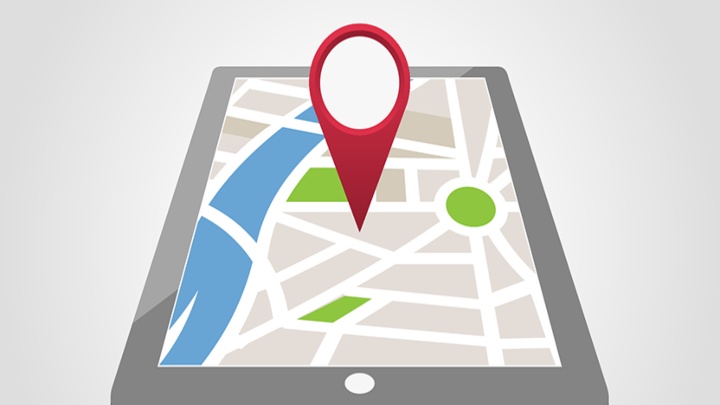In my last article, I talked about how today’s business owners and marketers are using new and unique ways to reach targeted customers with a location-based marketing tactic called Geofencing.
That article created a lot of messages and inquiries from DJs asking more about it, the costs, what type of software is needed, and how someone can start doing it quickly. So, read on in this Part 2 that explains things more in depth if you want to start doing effective Geofencing properly.
Recap – What Is Geofencing?
Geofencing, simply put, is a digital-advertising tactic that involves location-based ads that are served to people through social media, phone apps, app notifications, text messaging, and within the Google Display Network.
Because the ads are location-based, they are triggered by cellular data and GPS when a mobile device or RFID tag enters or exits a virtual geographic boundary, known as a geo-fence. So, when a bride enters a competitor’s location or a wedding venue or a bakery, you can serve them ads about your services and company, or even a special promo deal, which only shows up for them when they enter that specific location that you set a virtual fence around.
What Are The Costs?
If you’re familiar with buying Facebook ads, Google ads, Display Network ads, YouTube ads, and other forms of digital advertising, you’ll already know about many of the different advertising C’s – CPM, CPV, CPL, CPI, CPC, CPA, and CTR. Without going into too many details, these are cost measurements for individual clicks, impressions, views, acquisitions, leads, installs, and total click-through rates.
For Geofencing, there are typically two buying models for the campaigns you set up – CPM (Cost per Mille or Cost per 1,000 impressions) and CPV (Cost per Visit). CPV is more for those with a physical location (like, say, a store in a mall with heavy foot traffic) and want people to be served ads when they walk or drive past your location. CPM is the most common buying model for Geofencing, and it typically includes brand-awareness campaigns or campaigns that focus on reaching a specific audience. Industry pricing can range anywhere between $3.50 to $15 CPM for mobile and desktop campaigns.
The pricing ranges of CPMs vary depending on a number of factors, such as the volume of impressions purchased or the types of targeting tactics used. The more localized or narrow your targeting is, the higher the CPM can be. Other factors that can change the costs are the tools or software you use for setting up and monitoring Geofencing campaigns, the number of Geofences you set up, and the platforms.
What Software or Tools Do You Need?
There are between 15 and 20 different types of software packages out there to help someone do Geofencing, set up campaigns, and monitor performance. They can range between free (extremely limited) such as Plot Projects, to upwards of $500 to $3,000, to even SaaS-based software with monthly costs in vast ranges. You, as an individual, can purchase some consumer-based tools and software to do it yourself, but generally when someone wants to start Geofencing, they go to a digital marketing agency that already has the tools, software, and experience in place.
If you decide to use an agency with this experience and the capabilities, there will be a greater cost because you will be paying the agency to set up your campaigns, do the analysis, the optimization, the research, and analytic reporting. Add all of that to whatever monthly budget you have set for your Geofencing campaigns and you can easily see how this will get quite expensive. But also keep in mind that if you have great results with a proper ROI, the revenue you generate from the leads that come from Geofencing will offset many of the costs.
Not only can someone do all of this themselves through third-party tools and software, but you can set up Geofencing campaigns through Google Ads, too. Keep in mind that there are limitations to doing Geofencing with Google Ads, compared to what you’re able to do with third-party software. Google Ads allow you to set up Geofencing on the ads displayed on Google Search results, the display network, and YouTube, but that’s it and may not get you the same results as you would with professional tools and software.
Conclusion
It’s very important to know right away that there is a steep learning curve to understanding Geofencing and setting up ad campaigns. Without having at least the basic fundamentals and the understanding of how digital ads work or how to optimize your campaigns for the best ROI, you could very easily end up wasting money or getting zero results. And because Geofencing is generally more expensive than traditional digital advertising, you want to be smart about how you spend the money and making sure it’s a not a wasted effort.
But like I noted above, if you are able to pull off a successful campaign and get a large amount of leads that convert to bookings from it, it’s a worthwhile cost. There is no rule saying you can’t start off small by setting up a basic Geofencing campaign in Google Ads and then migrate to something better with professional third-party tools, software or agencies to get even more bang for the buck if you decide that Geofencing is one of your most effective digital marketing strategies for your DJ business.
As always, friends, if you have any questions or want to learn more, I’m just a Facebook message or email away from helping out. I hope everyone is haing a wonderful holiday season, and may 2023 be your best year yet! Stay healthy and well out there!
If you have any questions for Business Line, please send them to jtremayne@hazanmediagroup.com.


